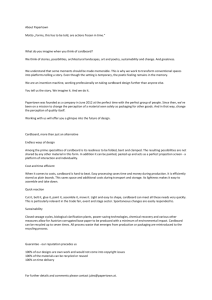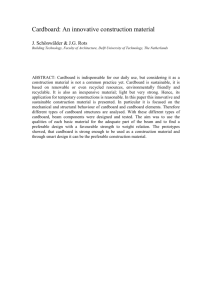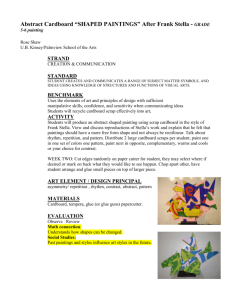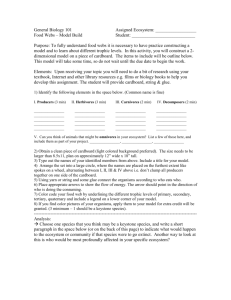The Light for Sight
advertisement
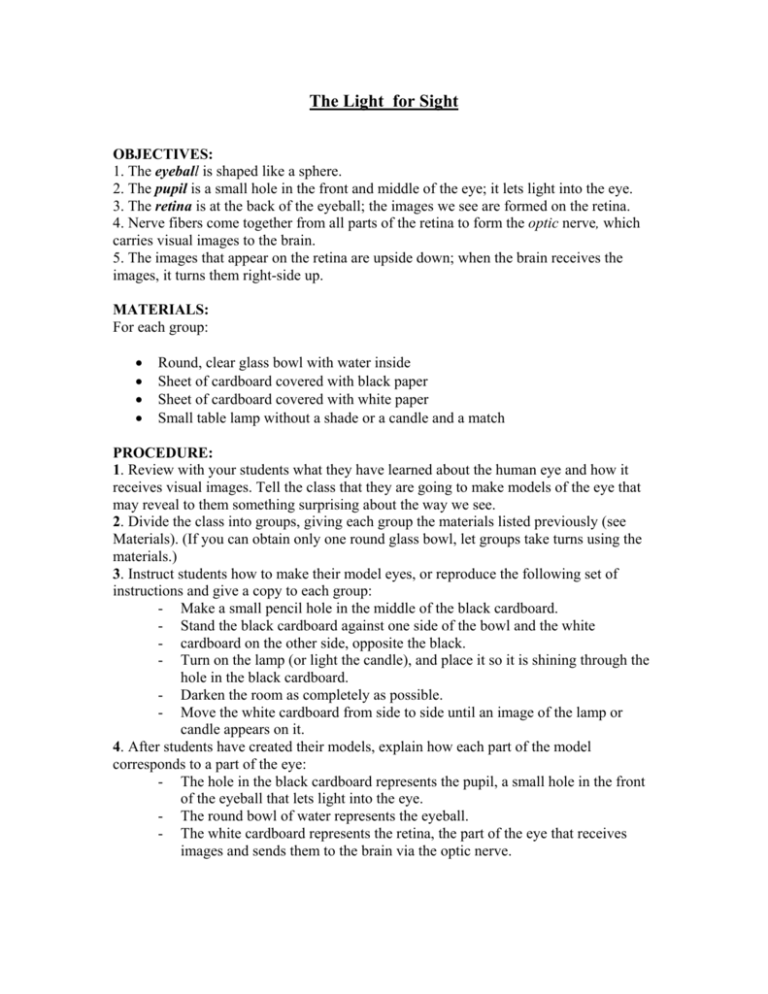
The Light for Sight OBJECTIVES: 1. The eyeball is shaped like a sphere. 2. The pupil is a small hole in the front and middle of the eye; it lets light into the eye. 3. The retina is at the back of the eyeball; the images we see are formed on the retina. 4. Nerve fibers come together from all parts of the retina to form the optic nerve, which carries visual images to the brain. 5. The images that appear on the retina are upside down; when the brain receives the images, it turns them right-side up. MATERIALS: For each group: • • • • Round, clear glass bowl with water inside Sheet of cardboard covered with black paper Sheet of cardboard covered with white paper Small table lamp without a shade or a candle and a match PROCEDURE: 1. Review with your students what they have learned about the human eye and how it receives visual images. Tell the class that they are going to make models of the eye that may reveal to them something surprising about the way we see. 2. Divide the class into groups, giving each group the materials listed previously (see Materials). (If you can obtain only one round glass bowl, let groups take turns using the materials.) 3. Instruct students how to make their model eyes, or reproduce the following set of instructions and give a copy to each group: - Make a small pencil hole in the middle of the black cardboard. - Stand the black cardboard against one side of the bowl and the white - cardboard on the other side, opposite the black. - Turn on the lamp (or light the candle), and place it so it is shining through the hole in the black cardboard. - Darken the room as completely as possible. - Move the white cardboard from side to side until an image of the lamp or candle appears on it. 4. After students have created their models, explain how each part of the model corresponds to a part of the eye: - The hole in the black cardboard represents the pupil, a small hole in the front of the eyeball that lets light into the eye. - The round bowl of water represents the eyeball. - The white cardboard represents the retina, the part of the eye that receives images and sends them to the brain via the optic nerve. 5. Ask students why the image they see on the “retina” is upside down. Explain that the curvature of the eyeball (or the round glass bowl) inverts the image by bending the light as it comes through. The image that forms on the retina in the back of the eye is also upside down, but the brain interprets the image so that it is seen right-side up. 6. Have each student produce a labeled diagram of the model indicating which part of the eye each part of the model represents. DISCUSSION QUESTIONS: 1. Explain the difference between light reflection and light refraction, and provide examples of each of these processes in action in everyday life. 2. As scientists have made clear, light is a strange phenomenon. On some occasions, it acts as if it were made up of individual particles called photons. On other occasions, however, it acts as if it were made up of waves. Explain the difference between these ways of imagining light. 3. Compare and contrast how a camera works with how the human eye works. List the mechanical parts that would be similar and the parts that would be different. 4. Describe several different vision irregularities in humans and discuss the various methods that are used to correct them. EVALUATION: 1 diagram incomplete and/or inaccurate and labels unclear 2 diagram complete and accurate, but not clearly labelled 2 diagram complete and accurate, -clearly labelled

